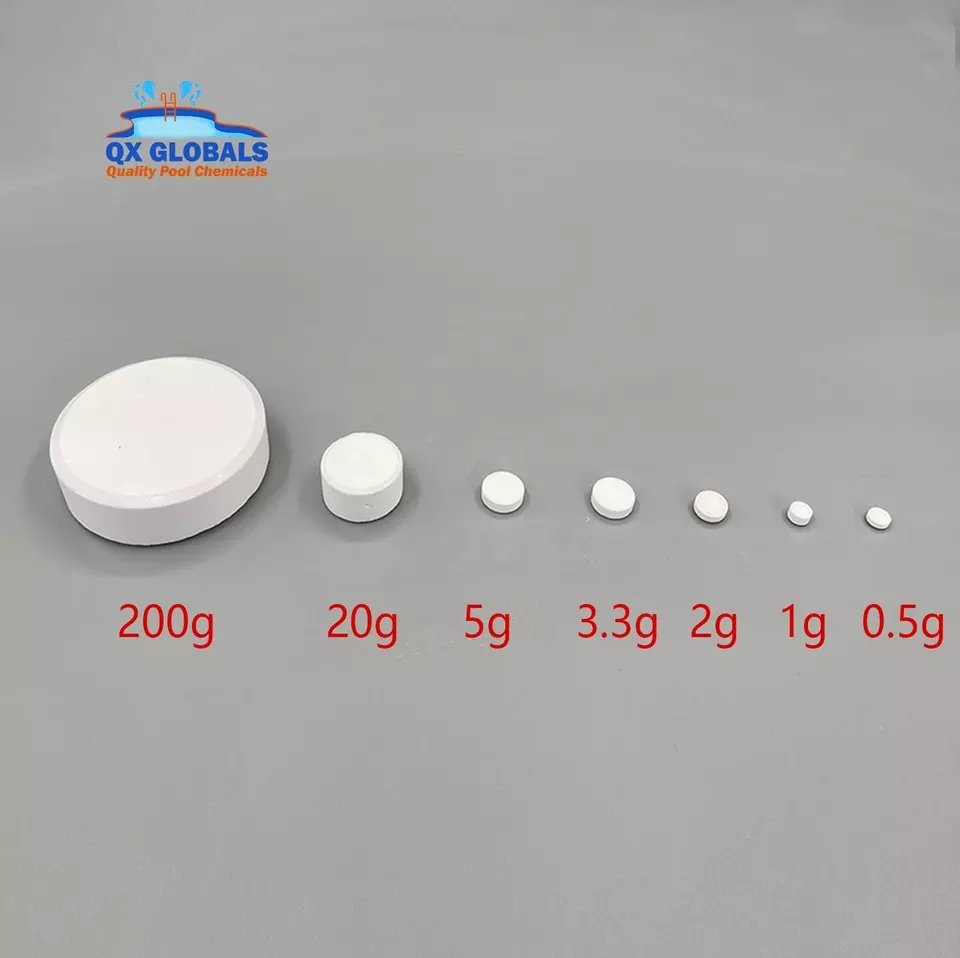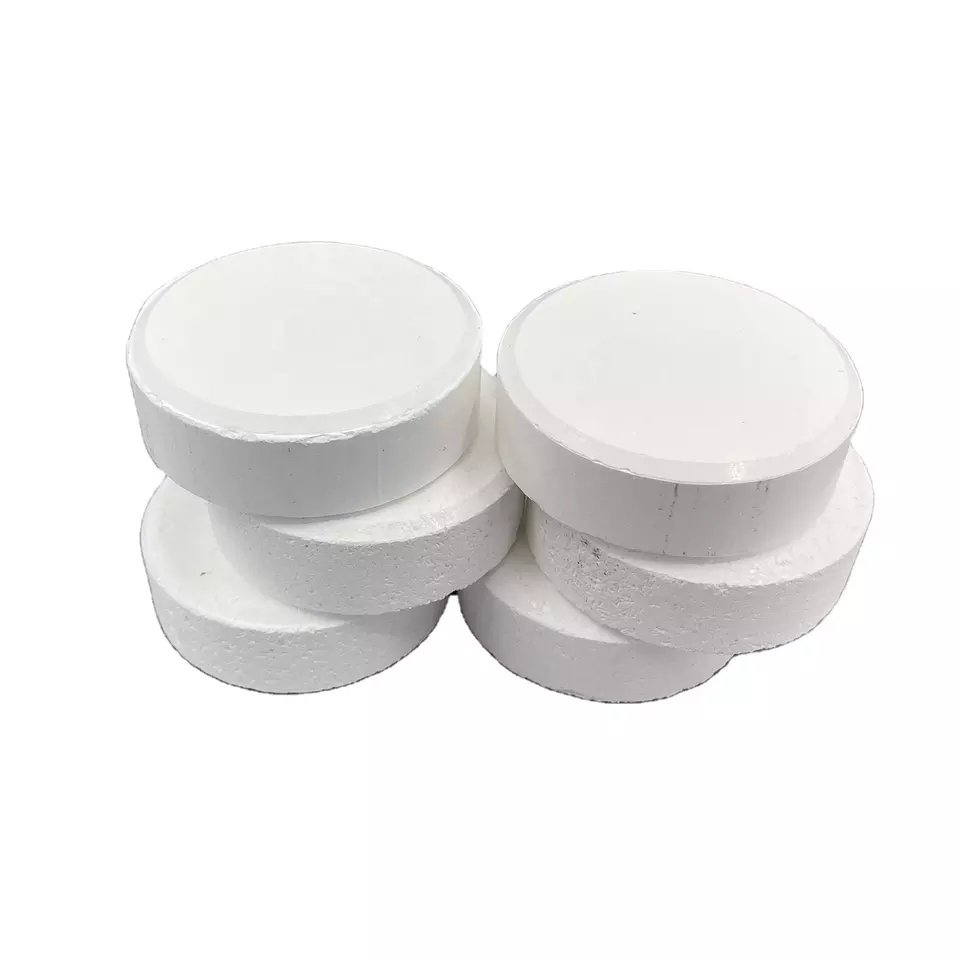Chlorine tablets are an essential tool for maintaining water hygiene and safety. Whether used in swimming pools or for disinfecting drinking water, they are critical in ensuring clean, safe, and healthy water. However, improper use of chlorine tablets can lead to serious consequences such as water quality issues, health risks, or even safety hazards. To help you avoid these pitfalls, this article will highlight common mistakes, explain their risks, and provide practical advice on proper usage.

I.Common Mistakes When Using Chlorine Tablets
Incorrect Dosage Usage
One of the most frequent errors is using the wrong amount of chlorine tablets. Overdosing can result in excessively high chlorine levels in the water, which may harm swimmers’ skin and eyes, irritate respiratory systems, and even damage pool equipment. On the other hand, underdosing can leave water inadequately disinfected, creating a breeding ground for bacteria and algae. To maintain proper water quality, it’s crucial to use the correct dosage based on water volume, temperature, and usage frequency.
Mixing Chlorine Tablets with Other Chemicals
Many users mistakenly mix chlorine tablets with other cleaning agents or chemicals, assuming it will enhance their effectiveness. This practice is not only unnecessary but can be extremely dangerous. For example, mixing chlorine tablets with certain chemicals can release toxic gases that pose serious health risks. Always follow the instructions on the product label and avoid combining chlorine tablets with any other substances.
Improper Storage
Storage mistakes are another common issue. Exposing chlorine tablets to high temperatures or humid conditions can cause them to lose potency or even become hazardous. Additionally, storing chlorine tablets in areas accessible to children significantly increases the risk of accidents. To ensure safety and effectiveness, store your chlorine tablets in a cool, dry place, away from sunlight and out of reach of children.
Incorrect Placement in Water
Many people simply toss chlorine tablets directly into the pool or water tank. While this might seem convenient, it can result in localized high concentrations of chlorine, which can corrode pool surfaces or harm swimmers in those areas. To avoid this, use a floating dispenser or specialized container to ensure the tablets dissolve evenly throughout the water.
Neglecting Regular Water Testing
Failing to conduct regular water testing is a critical mistake. Without testing, it’s impossible to know if the chlorine level, pH, and other parameters are within the recommended range. Ignoring these tests can lead to overuse or underuse of chlorine tablets, compromising water quality and safety.
Using Expired or Low-Quality Chlorine Tablets
Another common error is using expired or cheap chlorine tablets on sale without verifying their quality. While saving money may seem appealing, these products often deliver subpar results. Low-quality tablets may dissolve unevenly or fail to provide adequate disinfection, putting water users at risk. Always choose high-quality or the best chlorine tablets from reliable sources to ensure effective performance.
II.How to Use Chlorine Tablets Correctly
Manage Dosage Accurately
Calculate the appropriate number of chlorine tablets based on the size of your pool or water system. Consider factors like water temperature and how often the water is used. Following these guidelines will help maintain safe chlorine levels, protecting both health and equipment.
Follow Instructions Carefully
Always adhere to the manufacturer’s instructions when using chlorine tablets. Avoid mixing them with other chemicals, and handle them with care. This will prevent accidents and ensure effective water treatment.
Store Chlorine Tablets Safely
Proper storage is essential for maintaining the quality and safety of chlorine tablets. Keep them in a cool, dry, and well-ventilated location, away from direct sunlight and moisture. Ensure they are stored out of reach of children and pets to minimize safety risks.
Use Appropriate Dispensing Methods
For even distribution, use a floating dispenser, skimmer basket, or another suitable device to dissolve the chlorine tablets gradually. This method prevents localized over-chlorination and helps maintain consistent water quality.
Test Water Regularly
Use professional water testing kits to check chlorine levels, pH, and other key indicators. Regular testing ensures your chlorine tablets are being used effectively and allows you to make adjustments as needed. This step is essential for keeping water safe and clean.
Choose Quality Products
Invest in high-quality chlorine tablets for reliable results. While cheap chlorine tablets on sale might be tempting, prioritize those with proper certifications and clear expiration dates. High-quality products dissolve evenly, providing consistent disinfection and longer-lasting results.
III.Safety Tips for Using Chlorine Tablets
Using chlorine tablets safely is just as important as using them correctly. Follow these safety precautions:
Wear Protective Gear: Always wear gloves and a mask when handling chlorine tablets to avoid direct contact with skin or inhalation of fumes.
Ensure Proper Ventilation: Use chlorine tablets in well-ventilated areas to prevent the buildup of harmful gases.
Respond to Emergencies Promptly: In case of accidental exposure, such as inhaling chlorine gas or skin contact, seek medical attention immediately.
Dispose of Packaging Responsibly: Empty chlorine tablet containers should be disposed of safely to prevent environmental contamination.
IV.Conclusion
Chlorine tablets are indispensable for maintaining water hygiene and safety, but their misuse can lead to serious consequences. By avoiding common mistakes such as overdosing, improper storage, and neglecting regular water testing, you can ensure safe and effective use. Remember to follow the manufacturer’s guidelines, store tablets properly, and prioritize quality products like the best chlorine tablets to achieve optimal results. Finally, always practice safety precautions and stay vigilant about water quality to protect your health and environment.


 Instant
Quote
Instant
Quote Email
Us
Email
Us